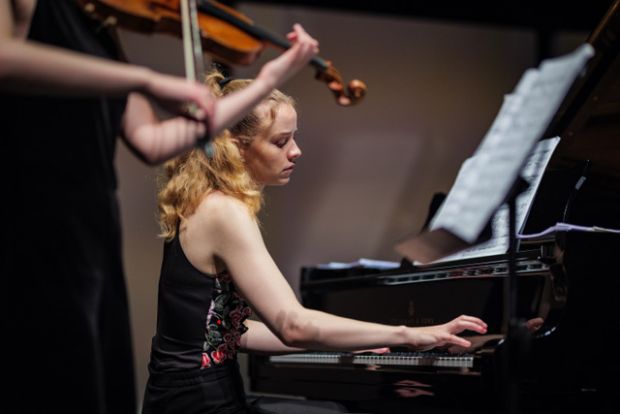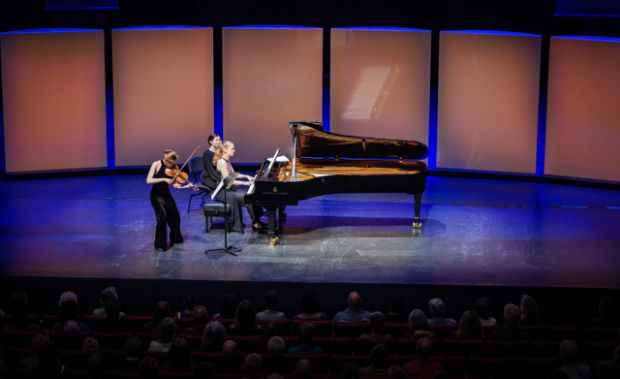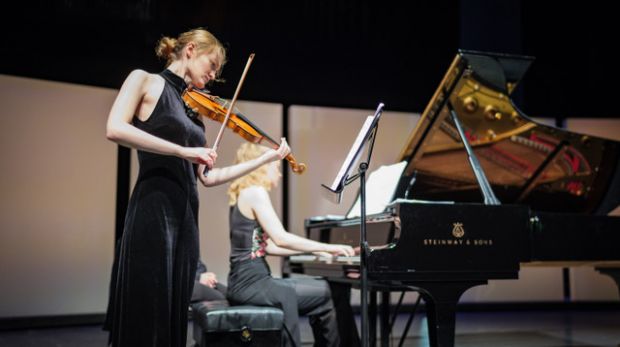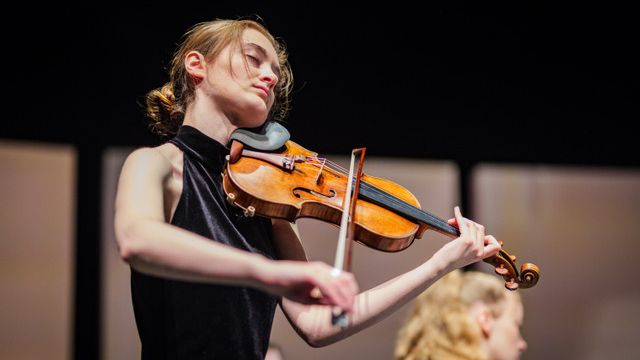Wildschut & Brauss
Musica Viva Australia are to be commended for importing artists of the calibre of violinist Noa Wildschut and pianist Elisabeth Brauss. Direct from the concert halls of Europe, they present a program, Wildschut & Brauss that has something for everyone, young or old, a music buff or a novice.
Schumann wrote Sonata No. 1 for Violin and Piano in A minor, Op. 105 in a few days, and although he said that he didn’t like the way it turned out, it has a remarkable freshness. The first movement is marked ‘Mit Leidenschaftlichem Ausdruck (Passionately expressive)’ Piano and violin merge into one. Bodies sway in harmony and the two instruments play a lively game of ‘catch me if you can’ in the finale only to end with a ghostly recollection of the opening tune.

Messiaen might not be everyone’s cup of tea, but it is this reviewer’s favourite piece of the evening. Theme Et Variations: Violin & Piano was composed as a wedding present for his first wife, Claire Delbos in 1932. Made up of a theme and five variations, it begins simplistically before entering the complex variations. Each variation varies in dynamics, time signature, tempo, tonality, and rhythm, among other elements; however, Messiaen cleverly retains suggestions of the theme all throughout. Eerily beautiful, it is technically demanding, but seemingly effortless for Wildschut & Brauss!
Having studied Debussy’s piano works when young, I was keen to hear his Sonata for Violin and Piano in G minor again. He was a sick man at the time of composing, and in the middle of World War I.
The first movement ‘Allegro vivo’ develops out of two serene and simple chords in the piano. We move abruptly from turbulence to celestial serenity and back again.

The second movement ‘Intermède: Fantasque et léger’ blends the capricious and vivacious feeling of a scherzo with moments of haunting introspection.
The final movement ‘Finale: Très animé’ opens with a return to the main theme of the first movement. Filled with mystery, the theme now seems to be opening the door to a new, transcendent world.
Devotees of Debussy will recognise the characteristic open chords and playfulness reminiscent of his etudes. He sets up a ‘conversation’ between piano and violin, both equals. Each are totally dependent on the other, one cannot exist without the other. The lushness of the sound is both comforting and outstanding.
The second half of the program begins with May Lyon's Forces of Nature. A brand-new work (composed this year) that explores humanistic themes from nature and lore to mathematics, with narrative dualities and rhythmic precision. A feature of this piece are the violin dynamics which must be exhausting to perform.

The final work for the evening is Enescu’s Sonata No. 3 in A minor for Violin and Piano, Opus 25. Enescu is famous for his Romanian Rhapsody No. 1 for orchestra, but his range of compositions is far broader. If that weren’t enough, he was a conductor of such ability as to be a candidate as Toscanini’s successor at the New York Philharmonic and a pianist of such skill as to elicit the admiration of no less than Alfred Cortot.
Even if it is technically a sonata for violin and piano, in reality it’s a sonata for a wide variety of instruments—the piano as cymbalon, lute, and pizzicato strings, the violin as crickets, larks, and most importantly, the human voice in the parlando rubato style that Bartók employed. The sheer range of effects is hypnotic. How Enescu managed to get all of that down on paper was the “greatest achievement in musical notation” for its day, according to Yehudi Menuhin.
This Sonata challenges its performers not only technically and musically, but also stylistically, conceptually, and poetically. At its conclusion, although ecstatic, both performers were spent as if they had finished a vigorous workout, which in fact they had. It is a piece requiring physical strength and endurance.
We were treated to an encore of a ‘Tin Pan Alley’ duet, a fitting end to a night of musical excellence.

On a side note, it is disappointing in this setting there are still people who do not heed the warning to put their phones on silent. The gentleman’s phone in front of me rang twice and disturbed what was a perfect concert. The performers had to wait till he could find somebody to turn his phone off for him. This shows a lack of respect for the artists and the audience.
Wildschut & Brauss are a musical treasure and an experience to be treasure! Two artists, at the top of their field of endeavour. I wish them well for the remaining seven concerts around Australia!
Barry Hill
DATES AND TIMES
Perth Concert Hall, Perth - 13 November 7:30pm
Adelaide Town Hall, Adelaide - 15 November 7:30pm
City Recital Hall, Sydney - 18 November 2:00pm
City Recital Hall, Sydney - 20 November 7pm
Newcastle City Hall, Newcastle - 21 November 7:30pm
QLD Conservatorium Theatre, Brisbane - 23 November 7pm
Melbourne Recital Centre, Melbourne - 25 November 7pm
Llewellyn Hall, ANU, Canberra - 27 November 7pm
Melbourne Recital Centre, Melbourne - 28 November 7pm
Subscribe to our E-Newsletter, buy our latest print edition or find a Performing Arts book at Book Nook.

